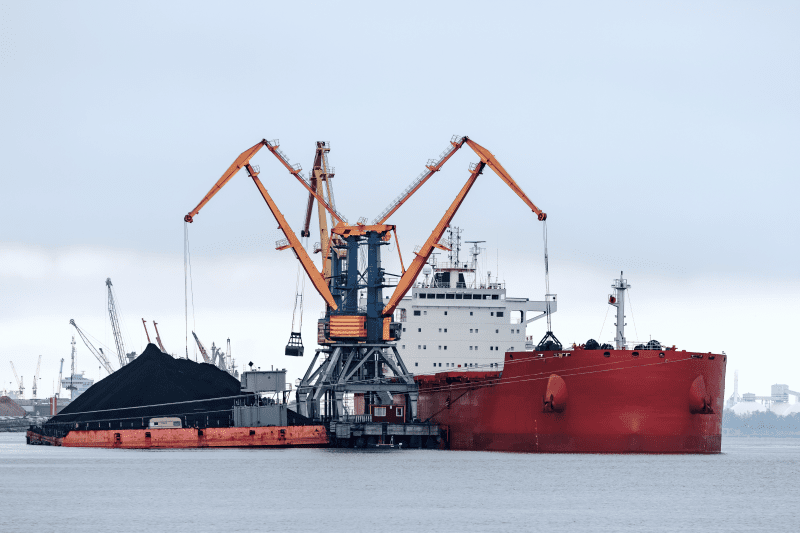In the labyrinthine world of shipping logistics, the intricacies of dry bulk chartering stand out as both a pivotal and complex segment. This article aims to provide a detailed dissection of dry bulk chartering solutions, highlighting the underlying dynamics, regulatory frameworks, and the operational strategies that define this sector. By delving into the latest trends and data, we seek to illuminate the pathways to enhanced efficiency and strategic foresight for professionals engaged in maritime logistics and policy regulation.
Dry bulk chartering encompasses the transportation of large quantities of unpackaged bulk cargo, such as grains, coal, ore, and cement, within dedicated vessels. This segment of the shipping industry is instrumental in facilitating global trade, with its complex logistics requiring meticulous planning and execution.
Shipping logistics in dry bulk chartering involves a multifaceted process that includes the coordination of vessel availability, cargo handling, and port operations. It necessitates an adept understanding of freight rates, voyage calculations, and charter party agreements. The strategic integration of these elements ensures the seamless movement of goods across international waters.
Bulk transport within dry bulk chartering is characterized by its reliance on specialized vessels, such as Panamax, Capesize, and Handysize ships. Each vessel type is designed to optimize the transport of specific cargo volumes and types, with their deployment contingent upon market demands and navigational constraints.
The regulatory environment governing dry bulk chartering is ever-evolving, with international conventions and national legislations shaping operational practices. A profound comprehension of these regulations is essential for industry stakeholders to ensure compliance and mitigate risks.
The International Maritime Organization (IMO) plays a crucial role in establishing regulatory standards for the shipping industry. Regulations such as the International Convention for the Safety of Life at Sea (SOLAS) and the International Convention for the Prevention of Pollution from Ships (MARPOL) are pivotal in enforcing safety and environmental protocols in dry bulk chartering.
Current trends in dry bulk chartering are significantly influenced by technological advancements and environmental considerations. The adoption of digital platforms for real-time tracking and data analytics enhances operational efficiency, while the shift towards eco-friendly shipping practices underscores the industry’s commitment to sustainability.
The integration of technology in dry bulk chartering is revolutionizing traditional operational models. Digital platforms facilitate the efficient management of chartering contracts, optimize voyage planning, and provide predictive analytics for market trends. These innovations are crucial for maritime operations managers seeking to streamline logistics and enhance decision-making processes.
Environmental sustainability has emerged as a critical focus in dry bulk chartering. The industry’s commitment to reducing carbon emissions and adhering to stringent environmental regulations necessitates the adoption of fuel-efficient vessels and alternative energy sources. This shift towards greener practices not only aligns with global environmental goals but also enhances the industry’s long-term viability.
Formulating effective strategies in dry bulk chartering requires a comprehensive understanding of market dynamics and operational intricacies. By leveraging data analytics and regulatory insights, industry professionals can devise forward-thinking strategies to optimize chartering operations.
The utilization of data analytics in dry bulk chartering is paramount for informed decision-making. By analyzing market trends, freight rates, and vessel performance metrics, maritime operations managers can anticipate demand fluctuations and optimize chartering strategies. This data-driven approach enhances the accuracy of forecasting models and facilitates strategic planning.
The dry bulk market is inherently volatile, with freight rates subject to fluctuations driven by global economic conditions and geopolitical factors. Navigating these market dynamics necessitates a nuanced understanding of supply-demand equilibria and the ability to adapt chartering strategies accordingly. By maintaining agility and foresight, industry stakeholders can mitigate risks and capitalize on market opportunities.
The realm of dry bulk chartering is characterized by its complexity and significance within the global shipping industry. As maritime logistics continue to evolve, the adoption of innovative solutions and adherence to regulatory frameworks will be paramount in driving operational efficiency and sustainability. By embracing data analytics and strategic foresight, industry professionals can navigate the challenges of dry bulk chartering and contribute to the advancement of global trade.
In summary, the integration of technological advancements, commitment to environmental sustainability, and strategic data-driven approaches are pivotal in shaping the future of dry bulk chartering. These elements not only enhance operational efficacy but also ensure the industry’s alignment with global regulatory standards and market demands. As we move forward, the continuous evolution of dry bulk chartering solutions will undoubtedly play a vital role in the maritime logistics landscape.






